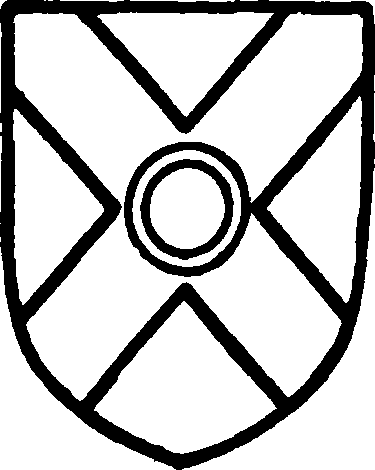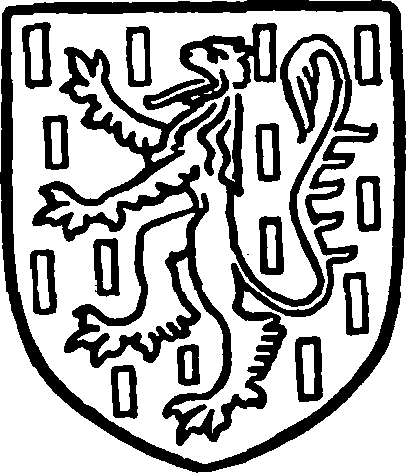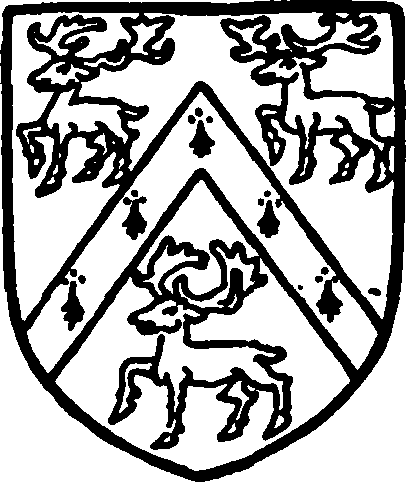A History of the County of York North Riding: Volume 1. Originally published by Victoria County History, London, 1914.
This free content was digitised by double rekeying. All rights reserved.
'Parishes: Normanby', in A History of the County of York North Riding: Volume 1, ed. William Page (London, 1914), British History Online https://prod.british-history.ac.uk/vch/yorks/north/vol1/pp542-544 [accessed 19 April 2025].
'Parishes: Normanby', in A History of the County of York North Riding: Volume 1. Edited by William Page (London, 1914), British History Online, accessed April 19, 2025, https://prod.british-history.ac.uk/vch/yorks/north/vol1/pp542-544.
"Parishes: Normanby". A History of the County of York North Riding: Volume 1. Ed. William Page (London, 1914), British History Online. Web. 19 April 2025. https://prod.british-history.ac.uk/vch/yorks/north/vol1/pp542-544.
In this section
NORMANBY
Normanbi (xi cent.); Northmanby (xiii cent.); Normanton (1316); Normanby in Pickering Lythe (xvii cent.).
The parish includes the townships of Normanby and Thornton Riseborough, an area of 2,404 acres, of which, together with Barughs Ambo (1,460 acres) in the neighbouring parish of Kirkby Misperton, about three-sevenths is arable land, five-ninths permanent grass and 14 acres woods and plantations. (fn. 1) The soil is clay and loam on a subsoil of Kimmeridge clay, the chief crops raised being wheat, oats and barley. There is a sulphurous mineral spring which contains carbonic acid and a small portion of neutral salt.
The parish lies between the streams of Dove and Seven, near their confluences with the Rye. It has an average height of 100 ft., but rises abruptly to 208 ft. in Normanby Hill and 236 ft. in Riseborough Hill. The village of Normanby and the hamlet of Low Riseborough lie by the side of the River Seven, which divides Ryedale from the Vale of Pickering, (fn. 2) on the road from Malton to Kirkby Moorside. There is a Wesleyan chapel, while at Normanby is a public elementary school belonging to the Church of England. In 1204 King John licensed the Abbot of St. Mary's, York, to inclose and impark the abbey's wood called Gauthsoon in Normanby. It was still called Abbott Park in 1644 (fn. 3); there is now only a small fox covert. In 1204 the park of Thornton was formed. (fn. 4) Riseborough (Riseberg, Risebarghe, Rycebarowe), which now tends to become an alternative name for Thornton, was, according to distinct statements made in 1204 and 1600, never a hamlet, but a name confined to the wood near Thornton, containing 22 acres of land in 1600. (fn. 5)
Manors
In 1086 land at NORMANBY was a berewick of Hugh son of Baldric's manor of Kirkby Moorside, while 3 carucates held before the Conquest by Gamel were land of the king. Both the Conqueror and Hugh son of Baldric granted these 3 carucates (fn. 6) to St. Mary's Abbey, York, (fn. 7) and the abbot already claimed these in 1086. (fn. 8) The manor remained in the possession of the abbey until the Dissolution (fn. 9); in 1546 it was granted by Henry VIII, with the advowson, to William Romesden of Longley and Richard Vavasour of Ripon and the heirs and assigns of William. (fn. 10) In the following January William and Richard were licensed to alienate them to Robert Meynell, serjeant-at-law, (fn. 11) later of Hawnby, who died seised in 1563, leaving a son and heir Roger. (fn. 12) Roger made a settlement in 1577–8 (fn. 13) and was succeeded in 1601 by his son Edmund. (fn. 14) The manor descended with that of Hawnby (fn. 15) (q.v.) until 1682, when Bernard Greenville and Anne his wife, by right of Anne and Katharine Morley, widow, conveyed half this manor to Christina Berkley, widow, and others. (fn. 16) In 1684 Bernard and Anne made a similar conveyance to Thomas Robson and his heirs and Henry Hodson, Christopher Coatford and Charles Bishop (fn. 17); but in 1737 John Hill, whose family had held the advowson since 1661, was in possession of the manor. (fn. 18) It now belongs to Mr. Thomas Grayson and Mr. William Grayson.
The abbot's free warren here is mentioned in 1397. (fn. 19)

Nevill, Lord Latimer. Gules a saltire argent with the difference of a ring sable.
Before the Conquest Gamel had at THORNTON RISEBOROUGH or RISEBOROUGH (Torentun, Tornentun, xi cent.; Torinton, Torenton, Toronton, xii cent.; Thorneton in Risberg, xiii cent.; Thornton sub or subtus Rysbergh, xiv–xvii cent.) a 'manor' and 4 carucates, which by 1086 had passed to the king. (fn. 20) By 1284–5 the Nevills of Raby had obtained a mesne lordship, (fn. 21) which descended to Ralph first Earl of Westmorland. (fn. 22) He must have given it to his fifth son George, created Lord Latimer in 1432. (fn. 23) George died seised in 1469, (fn. 24) and in 1531 the manor was still held of his great-grandson (fn. 25) John third Lord Latimer as of his manor of Sinnington. (fn. 26)
The earliest recorded undertenant is Alan de Wilton, whose grandfather Alan (fn. 26a) was probably an ancestor of the family subsequently called Bulmer, lords of Bulmer and of Wilton in Cleveland. The wapentake of Bulmer was called Bolesford in 1086, (fn. 27) and Alan de Buleford, who owed 1 mark in the wapentake of Ryedale in 1166, (fn. 28) may have been Alan de Bulmer or Wilton. In 1204 King John licensed the younger Alan de Wilton and his heirs to inclose and impark his wood called Riseberge in Thornton and to have his dogs there, and he also exempted him from assizes and juries except in matters touching the Crown. (fn. 29) Alan died without issue, as did his brother and heir Thomas de Wilton. They were succeeded by their kinsman John de Bulmer, lord of Bulmer and Wilton (q.v.), who in 1268 held Thornton Riseborough, (fn. 30) which followed the descent of Bulmer (q.v.), passing to the Crown in 1558. (fn. 31) Leases of the capital messuage and lands in Thornton were made in 1559 and 1572. (fn. 32) In 1585 they were granted to John Milborne for life with remainders to his son Thomas and wife Jane for their lives, a grant in fee being made to John in 1600. (fn. 33) In 1613 Ralph Maddison and Isabel his wife, Geoffrey Milborne and Barbara his wife and Thomas Milborne conveyed land and tenements in Thornton and elsewhere to Sir William Wentworth. (fn. 34) His son Thomas Viscount Wentworth, with Charles Greenwood, George Radcliffe and Christopher Wandesford in 1632 conveyed the manor to Sir Arthur Robinson and Luke Robinson, with warranty against the Milbornes. (fn. 35) Sir Arthur Robinson was son of John Robinson, citizen of London and merchant of the staple. He was Sheriff of Yorkshire in 1633–4 and died in 1642, leaving a son and heir Luke, father of a son Luke, (fn. 36) who was in possession in 1694. (fn. 37) The manor belonged to the Robinsons (fn. 38) of Welburn (fn. 39) (q.v.) until purchased in 1878 from Mrs. Wrangham and the Misses Smith by the late Mr. Thomas Harrison, (fn. 40) whose widow is the present owner.

Bulmer. Gules billety with a lion or.

Robinson of Thornton Riseborough. Vert a cheveron erminois between three roebucks tripping or.
In 1279 John de Bulmer claimed gallows, infangentheof and amendment of the assize of bread and ale by prescription. (fn. 41)
Church
The church of ST. ANDREW consists of a chancel measuring internally 19 ft. 9 in. by 17 ft. 6 in. with a modern north aisle, and a nave 34 ft. 9 in. by 19 ft. 2 in., with a north aisle 6 ft. 1 in. wide and a south porch.
The whole church, which is built of coursed rubble with tiled roofs, has been much restored, and is said to have been rebuilt in 1718, but the plan of the nave probably dates from the 12th century, and the chancel may be in part of the same date, but was widened to the north late in the 14th century. A north aisle was added at the end of the 12th century, but this was destroyed and the arcade blocked up at some date which is now uncertain. The whole building was restored during the years 1893 to 1895, the chancel was partly rebuilt, a north chancel aisle was added, the nave arcade was opened and the aisle was reconstructed. The porch is also modern.
The east window of the chancel is modern and of three trefoiled lights with tracery. In the north wall is a 15th-century window of three cinquefoiled lights under a square head, which is the old east window reset. This now opens into the chancel aisle, and has a wooden lintel on the north which is inscribed 'I. W. 1778.' At the south-east of the chancel is a piscina made up of fragments found during the restoration. The east jamb is of 12th-century date and is shafted. The west jamb is modern, and the head, which is trefoiled, is of late 13th-century date. In the south wall are two single-light windows; the first has a modern trefoiled head, but the jambs of both windows and part of the head of the second window appear to be 13th-century work reset. The chancel arch is of two chamfered orders on semioctagonal responds with capitals of crude design. That on the north is decorated with two grotesque snake-tailed birds, now much defaced, carved in high relief. The capital on the south is decorated with ivy leaves, and the whole arch, which is out of centre with the nave, dates from the widening of the chancel.
The nave is of three bays with semicircular arches of one square order, and circular columns having moulded bases and shallow bell capitals with square abaci. The arches, though largely renewed, are mainly of late 12th-century date, and two columns, one capital and a part of one base are also original, but the rest of the arcade has been restored. In the south wall are three modern windows. The first is a twin lancet, the second is of three trefoiled lights and the third is a single trefoiled light. Between the westernmost pair of windows is the south doorway, which is of two continuously moulded orders, and is of late 12th-century date, reset and much restored, the jambs being modern. Over the west gable of the nave is a small bellcote. The north aisle, which is lighted by lancet windows, is entirely modern, and is separated from the chancel aisle by a modern half-arch.
The roofs throughout are modern. At the west end of the nave is an old stone basin on a modern stem, now used as a font. Near the south door is a turned wooden baluster, now used as a poor-box. The head of this is hollow and lined with lead, and it was used until recently as a font. In the north aisle are two coffin slabs of 13th-century date with roughly cut Maltese crosses, and there is part of a third set in the porch wall. In the porch are also some fragments of 12th-century work, including some cheveron-moulded voussoirs and the round head of a small window cut from a single stone. There is also a small defaced foliated capital apparently of 13thcentury date.
There are two bells in the bell-gable, the larger cast by Thomas Mears of London, 1795, the smaller by Warner in 1895.
The plate includes a cup and cover, now adapted as a paten, each having the date mark of 1662 and the maker's mark of Marmaduke Best of York, a modern paten and cruet and a pewter paten.
The registers begin in 1699.
Advowson
The church belonged, according to the earliest records, to St. Mary's Abbey, York, which presented (fn. 42) to the living until 1513, when the abbot and canons conveyed the advowson to Thomas Flintoff, who presented until the Dissolution. (fn. 43) In 1546 the advowson and rectory were granted to William Romesden and Richard Vavasour with the manor, and descended with it until 1617, (fn. 44) and perhaps later, although from 1572 presentations were made by others, presumably lessees. From 1572 to 1579 Christopher Hayle held the advowson, from 1579 to 1615 Phineas Hodson, Chancellor of York, from 1615 to 1661 Edward Beaucocke, from 1661 to 1724 John Hill and Richard Hill, from 1724 to 1814 another John Hill, in 1814 Arthur Cayley for that vacancy, from 1814 to 1894 the Rev. John Richard Hill, from 1894 to 1896 the Rev. Reginald James Hill, who in 1896 sold the advowson to John Potter. In 1900 John Potter and others presented it to its present owner, the Rev. Edward Harley Molineux Jackson, rector of Normanby. (fn. 45)
There was a manorial chapel at Thornton early in the 13th century, when Alan de Wilton established a chantry there with the consent of the rector of Normanby. (fn. 46) The chapel is last mentioned in 1584–5, when it was granted to Anthony Collins and others. (fn. 47)
Charities
In 1700 Judith Boynton, by her will dated 19 November, charged her estate, called White Carrs, at Thornton Riseborough, with the annual sum of £6, £5 thereof to be for a schoolmaster and £1 in purchasing Bibles for poor persons. By an order dated 5 August 1904, made under the Board of Education Act, 1899, the £5 a year was constituted the Boynton Educational Foundation.
The school formerly received the annual sum of £4 3s. 4d. from John Stockton's charity. Owing to the reduction of interest on consols no payment has been made since 6 January 1903. The sum formerly paid was £5 a year. (See under Kirkby Moorside.)